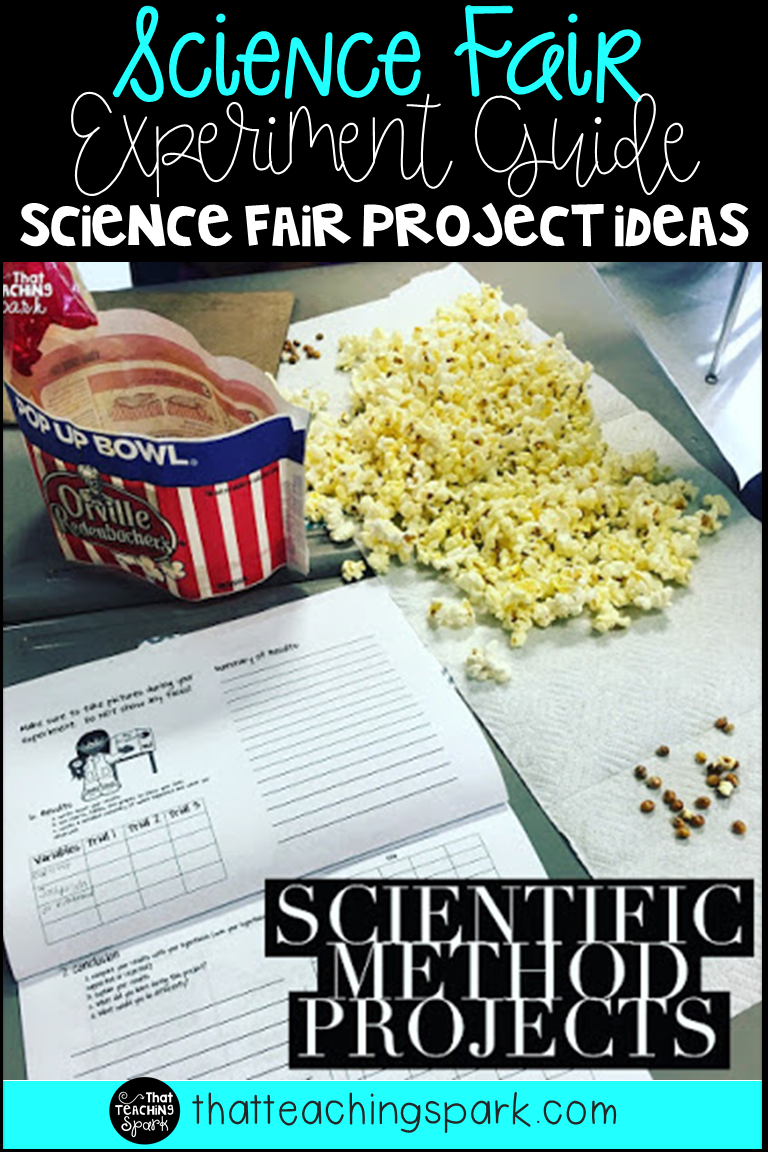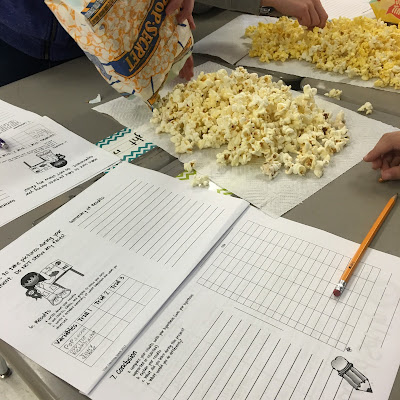In my school, all of third grade is required to complete a Science Fair Project. To be proactive and to minimize the risk of parents wanting to gauge my eyes out, I created a Science Fair Journal that walks students through the process and gives them helpful reminders of the things I've been teaching them for weeks!! We also complete an entire Science Fair Project TOGETHER as a class and complete the journal TOGETHER. This way I have modeled exactly what is expected and students already have experience with the process.
Question
For the past two years I decided to research about popcorn. Food + kids = ENGAGEMENT! Last year our question was, "Which brand of popcorn will pop the most kernels?" This year we did pretty much the same thing but instead of brands, we research types. We were trying to see if it made a difference if the popcorn was super buttery or if it was plain with just salt. Our question was, "Which type of popcorn will pop the most kernels, sea salt, butter, or extra butter?"Background and Hypothesis
For this experiment we had to use the same brand to keep all the variables the same except the popcorn type. After researching at www.popcorn.org/Facts-Fun/What-Makes-Popcorn-Pop we created our Hypothesis. "IF we microwave sea salt, butter, and extra butter popcorn for two minutes and thirty seconds, THEN the extra butter popcorn will pop the most kernels."Materials
The pictures I am showing are from last year's experiment with the different brands of popcorn, so don't let that confuse you. The materials you will need are simple and depend of the experiment you choose.Testing the brands:
(make sure the bags have the same amount-grams)
You will need a total of 3 bags for each brand for a total of 3 trials
microwave
Pop Secret Butter 34 grams
Jolly Time Butter 34 grams
Orville Redenbocher Butter 34 grams
paper towels
Testing the type:
(make sure the bags have the same amount-grams)
You will need 3 bags for each type for a total of 3 trials
microwave
Pop Secret Sea Salt 34 grams
Pop Secret Butter 34 grams
Pop Secret Extra Butter 34 grams
paper towels
Procedure
This was a very easy experiment because you basically just pop all the bags for 2:30 minutes each. I divided my students into 3 large groups to act as Trial 1, Trial 2, and Trial 3 and laid paper towels on the table. The students dumped one bag at a time onto the paper towels and counted all the unpopped kernels. The logic here is that if all the bags have the same amount inside, then they should have just about the same amount of kernels. If you want to get super technical, I'm sure there is a slight difference with every bag and you could count the popped and unpopped kernels and develop a ratio, but for our simple third grade experiment, we are sticking with just counting the unpopped kernels.Students recorded their results for each bag and then we shared the results of each Trial as a class to record in our Science Fair Journal.
Results- Data/Analysis-Conclusion
After we recorded the results for the 3 trials, I showed them how to create a graph with a graph key so we could fit all 3 trials on one bar graph. We summarized our results into paragraph form and then we wrote our conclusion. In the conclusion it is important for students to state if their hypothesis was supported or rejected. It is also very important for them to know that their hypothesis DOES NOT need to be correct. Some kiddos think if their hypothesis was rejected that they did the experiment wrong. The whole purpose of the experiment is to see what will really happen. If you are wrong that is ok! You should never do an experiment when you are 100% sure of the results. What would be the point? You learn nothing.
I hope these ideas were helpful to you and you are one or two steps further away from the ledge!! Science can be fun!
You can grab the blank journal we used here.
Happy Sciencing!










Wow! I love this idea! All kids love popcorn and they will definitely love this experiment. Thank you for sharing!
ReplyDeleteimgrum